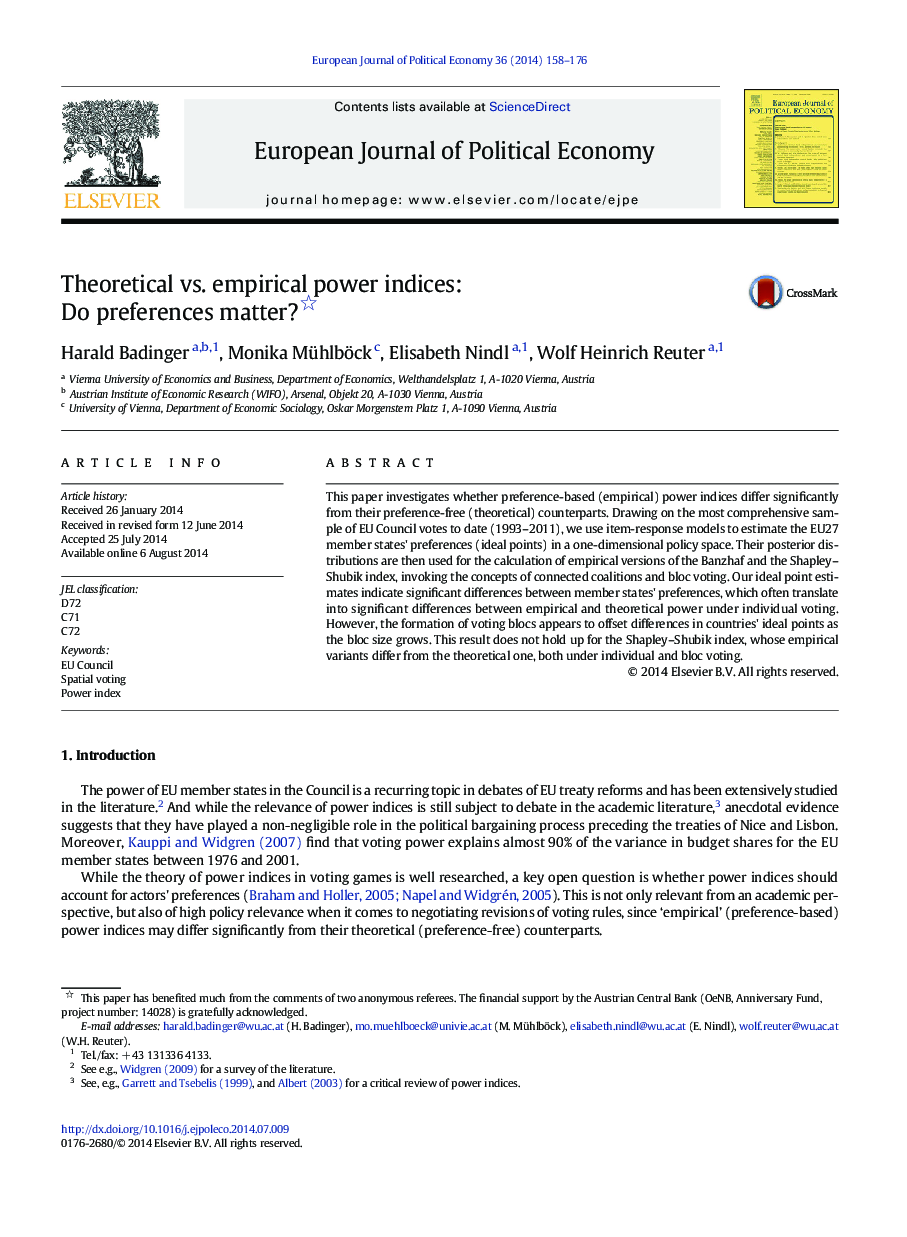| کد مقاله | کد نشریه | سال انتشار | مقاله انگلیسی | نسخه تمام متن |
|---|---|---|---|---|
| 5068065 | 1476890 | 2014 | 19 صفحه PDF | دانلود رایگان |

- We set up the to date most comprehensive sample of EU Council votes (1993-2011).
- We use item-response models to estimate the EU27 member states' preferences.
- We estimate empirical power indices, based on connected coalitions and bloc voting.
- We test for differences between empirical and theoretical power indices.
- Results highlight the role of preferences for actual voting power.
This paper investigates whether preference-based (empirical) power indices differ significantly from their preference-free (theoretical) counterparts. Drawing on the most comprehensive sample of EU Council votes to date (1993-2011), we use item-response models to estimate the EU27 member states' preferences (ideal points) in a one-dimensional policy space. Their posterior distributions are then used for the calculation of empirical versions of the Banzhaf and the Shapley-Shubik index, invoking the concepts of connected coalitions and bloc voting. Our ideal point estimates indicate significant differences between member states' preferences, which often translate into significant differences between empirical and theoretical power under individual voting. However, the formation of voting blocs appears to offset differences in countries' ideal points as the bloc size grows. This result does not hold up for the Shapley-Shubik index, whose empirical variants differ from the theoretical one, both under individual and bloc voting.
Journal: European Journal of Political Economy - Volume 36, December 2014, Pages 158-176